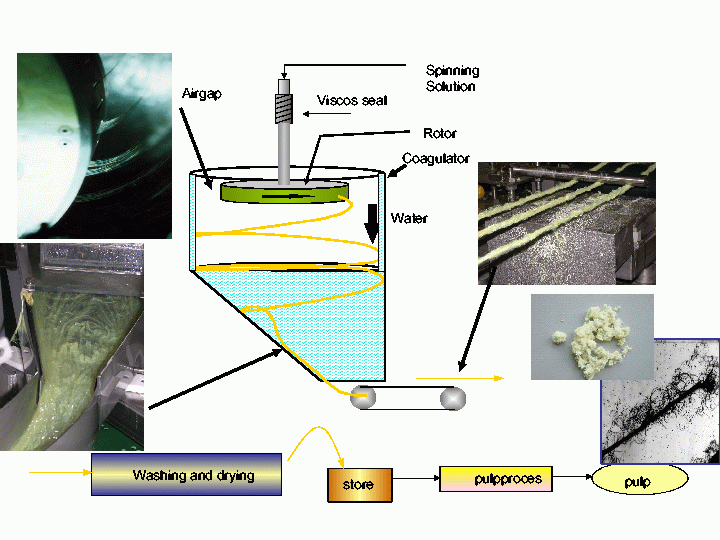The rotor spinning process for fibre production
Everdien Kolk
Site of the project:
Teijin Twaron
Velperweg 76
Arnhem
The Netherlands
This project has been motivated by the
48th European Study Group SWI 2004
"Mathematics with Industry"
15- 19 March 2004, Delft, The Netherlands
start of the project: February 2005
In May 2005 the
Interim
Thesis has been appeared
and a
presentation has been given.
The Master project has been finished in November 2005.
For working address etc. we refer to our
alumnipage.
Summary of the master project:
At Teijin Twaron in Arnhem new ways of producing fibres are being
developed. One of the interesting new techniques is "The Rotor
Spinning Process". See figure below.

In this process we consider a polymer-filled rotating circular disc
(cylinder) with tiny holes (the rotor).
The polymer is, due to inner pressure and the centrifugal force,
pressed
through the holes to the outside.
Each hole 'produces' a so-called spinning line consisting of liquid
polymer.
The velocity of the particles in the rotating spinning lines increases
with the distance to the rotor.
The spinning lines are 'catched' by another stagnant, concentric,
circular cylinder (the coagulator).
At the coagulator the velocity of the particles in the spinning lines
has to be equal but opposite to the rotational velocity.
On the inner wall of the coagulator the liquid polymer solidifies to
filaments by means of a cold water layer and is transported further.
The purpose of of the master project is to verify an existing
model on the basis of momentum and mass balances.
Thereafter a stable numerical or analytical solution method should be
given. Depending on the results the model can be improved or extended.
The purpose of the modelling in some more detail reads:
- Try to determine the situation (process and geometry) in which a
continuous filament can be generated. Breaking of filaments may cause
problems in the use of the material if the length of the filament is
below a critical length.
-
Try to determine the circumstances (process and geometry) in which
the length of a broken filament can be determined beforehand. In this
case, fibres can, in principle, be produced.
-
Determine the effect of the temperature, rotor speed, etc. in the
present operating situation in order to achieve a robust production
process

Contact information:
Kees
Vuik

Back to the
home page
or the
Master students page of Kees Vuik

![]()
![]()